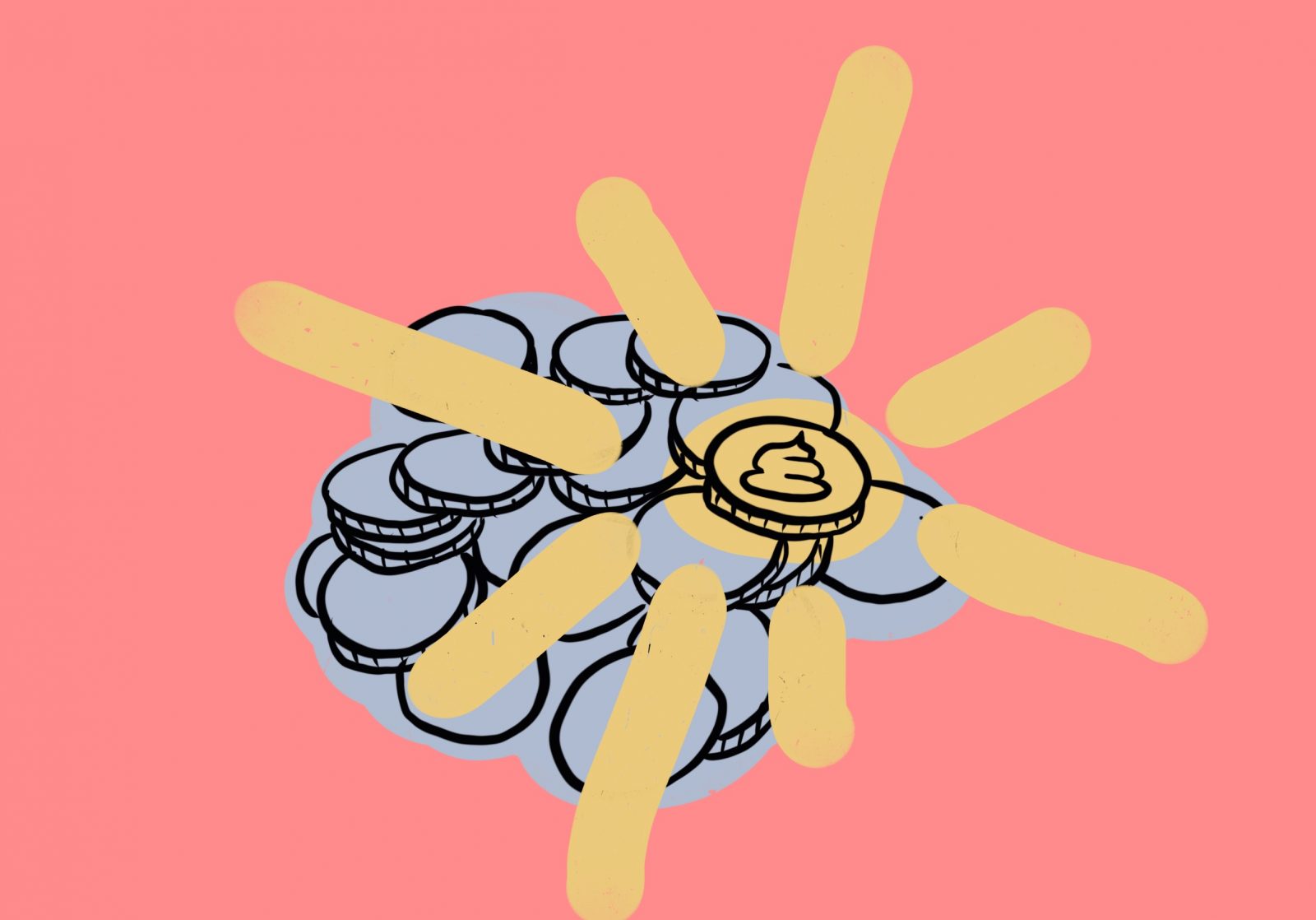In the cryptocurrency community, there’s a running joke about regretting not investing in or losing all their money on made-up tokens with names like “DogeElonRocket69420.” While these jokes certainly have their comedic value, the fact that so many of these “trendily” named coins exist that there’s an entire format for a joke about them speaks volumes regarding the ubiquity and frequency with which these coins pop up. So where do they come from? And could they potentially hold some value?
We call these tokens “sh—tcoins.” Originally, the term was used by Bitcoin “maximalists” who believed that every cryptocurrency other than Bitcoin wasn’t worth their time. Since then, the term has seen more usage as a term to describe seemingly purposeless cryptocurrency tokens that most with some common sense will see as, well, s—.

Sh*tcoins can exist because of the ease with which someone can list a token on the Ethereum blockchain using decentralized platforms such as UniSwap or on the Binance Smart Chain using PancakeSwap. I have also created my own token once just to test it out — it’s that easy.
One of the first true-to-name sh*tcoins was Dogecoin, which has now positioned itself as the role model for many of the newer coins. Dogecoin was created as a joke and is explicitly advertised as a coin that has no intended utility, but received millions of dollars in investment regardless. It capitalized on the then-trending meme involving the Shiba Inu dog who has cemented its place in history as “Doge,” and the token was meant to be nothing more than a funny reference to the meme.
Since Dogecoin, there have been thousands of tokens that have all purported to be the next Dogecoin, promising astronomical returns without presenting any real product. Some examples off the top of my head include the Safemoon token, the Dogelon Mars token and the Shiba Inu token.
These tokens may seem like terrible investments. There is no ecosystem that you would support by investing in them — like Ethereum — and they aren’t tried-and-true stores-of-value, like Bitcoin. But both the creators of these tokens and the investors in them are extremely aware of this.
These tokens aren’t meant to be legitimate investments in a product people believe in. These coins are made solely to make a few people a lot of money by taking it from those that were either too late or invested badly into them. In other words, these tokens are based less on “value” and more on riding the hype and market patterns.
So they’re a big problem, right?
Well, not exactly. Or at least I don’t think they are.
You see, in the larger scheme of things, this type of market actor behavior is commonplace. Before the rise of the 14 corporations that control almost all of the automobile market, we saw thousands of small, home-grown car manufacturers that competed on a small scale with each other. During the buildup to the dot-com bubble, we saw thousands of companies claiming that they would create the next technological revolution. Do you remember Boo.com? It too was an online bookstore that attempted to expand, just like Amazon. It just didn’t succeed.
Many companies during the dot-com bubble did not even survive as long as Boo.com’s two-year stint. As a result of extreme speculation and overvaluation of basically all tech companies, most did not make it past a couple of months, as they could not attract enough customers to justify the large amounts of investment pouring in. Most companies who IPO’d had a meteoric rise in stock price, but had little to no growth of substance to show for it.
However, survivors of the dot-com bubble, like Amazon or eBay, cemented their place in our everyday lives.
These sh*tcoins represent cryptocurrency’s entry into its adolescence. The technology is now a little more mature than it was five years ago and has gained enough popularity for random projects to suddenly be valued in the billions of dollars before disappearing from the spotlight.
To me, the fact that coins like Baby Dogecoin, Squid Game Token or Dogelon Mars exist means that cryptocurrency is nearing its final tests before we can determine the longevity and survivability of the technology into the future.
If crypto is here to stay, the sh*tcoins will slowly start to disappear from mainstream interest and be replaced with legitimate, sound investments. Until then, they tell us that we are so very close to being ready for the future.



















































































































Sungbin Jang • Nov 15, 2021 at 4:43 am
great read!